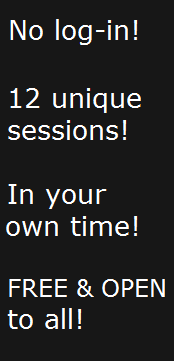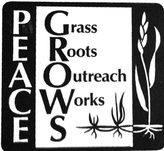One of Gene Sharp's most famous works, From Dictatorship to Democracy, has been translated into more than thirty languages (How to Start a Revolution). Greg cites a couple different factors for its success. First, he says that it was one of the first books that “was relatively short, had some history behind it... and it provided a step-by-step” process that was simple to experiment with and practice; additionally, “Nothing achieves success like success,”(Coleridge). Once one movement succeeded, others asked where they had found the strategies, and the essay grew in popularity by word of mouth.
According to Greg, there has been a dearth of strategy in circles that promote social action and change. Too often, people react defensively instead of examining the dynamics of a situation and acting from that understanding. For instance, Greg mentioned that the military teaches violence in a systematic, methodical way: “They learn the history, the theory, the strategy, [and] the tactics” related to waging war (Coleridge). If people want to be as effective in promoting nonviolent change, they must do the same and think strategically.
One of the criticisms that Greg has for Gene Sharp is that “[Sharp] does not connect so very much the macro with the micro.” What Greg means by this is that Sharp thinks mostly in terms of the large scale movements to overthrow an oppressive government without teaching the small scale movement of personal nonviolence.
Too often people who want to create nonviolent change focus solely on one aspect, but Greg suggests thinking of movement building as three pieces of a pie: “The first would be working on yourself personally - personal transformation. [The second is] changing societal structures, and the third is looking at creating an alternative for what you want” (Coleridge).
Personal transformation is important in order for the liberators to create true positive change, instead of simply replacing one oppressor with a new oppressor. The second piece of the pie is what Sharp focuses on – how to change society to improve the conditions for the people it should serve?
In the midst of that, it is important to focus on the third piece – creating alternative solutions. This would include creating microcosms of whatever issues need to be fixed. That way, as Greg says, if and when the “power structure collapses, you would hopefully be able to take the microcosm” that you have created, whether its an economic system or a system to feed or educate people, and use that to replace the old oppressive system (Coleridge).
In order for a movement to be truly successful, Greg argues, the people need to “be engaged and involved in all of these [aspects] in some way” (Coleridge).
See Session 12 of this website for audio and video entitled "Assuring Nonviolence" and slide show entitled "Imaging a Nonviolent Community or World." Please see our revised BEGINNERS GUIDE for suggestions on how to use this course.
Submitted by Hannah Yackley
John Looney Intern 2015
Coleridge, Greg. "Gene Sharp Impressions." Personal interview. 19 Mar. 2015.
How to Start a Revolution. Dir. Ruaridh Arrow. Gene Sharp. The Big Indy, 2012. DVD.

 RSS Feed
RSS Feed

